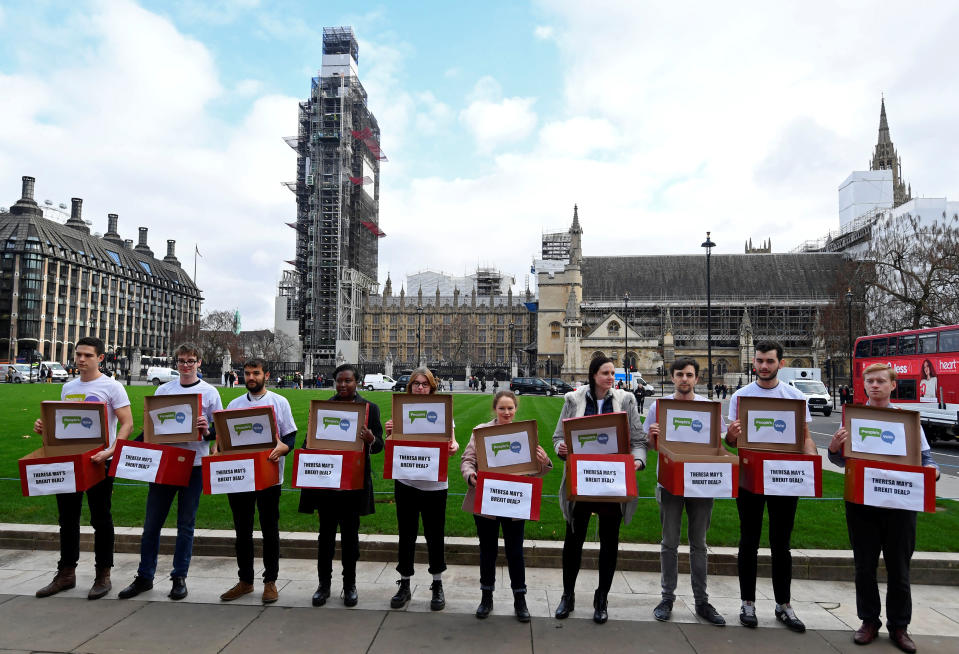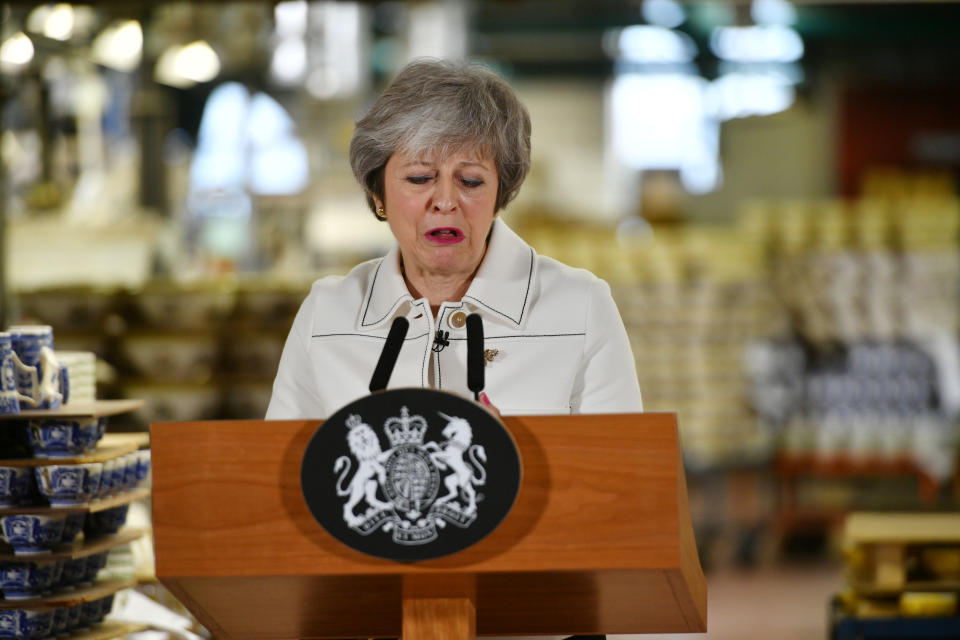5 possible outcomes after May's rejected Brexit deal

This post has been updated.
Members of Parliament (MP) rejected Prime Minister Theresa May’s Brexit deal for leaving the European Union (EU). A total of 432 MPs voted against the deal and 202 MPs supported the deal.
The prime minister is set to head back to Brussels in yet another attempt to secure concessions from the European Union on the deal – something EU Commission president Jean-Claude Juncker has repeatedly said he is not willing to do.
“It is not perfect but when the history books are written, people will look at the decision of this House and ask, ‘Did we deliver on the country’s vote to leave the EU, did we safeguard our economy, security or union or did we let the British people down?'” May said yesterday in the House of Commons.
The leader of the Labour party, Jeremy Corbyn, tabled a motion of no-confidence against Theresa May’s government moments after the vote was finalized.
READ MORE: It’s more likely Brexit will not happen on 29 March, than no-deal — EIU
Although, politicians will be able to suggest amendments to reshape the deal, rejecting the deal means opening the UK up to a number of outcomes. The five main possible outcomes if the deal is rejected are:
A second Brexit referendum
A vote of ‘no confidence’
Another general election
A major renegotiation of the Brexit deal
A no-deal Brexit
A second Brexit referendum

May said in December 2018 there wouldn’t be a second referendum on leaving the EU. However, there is now a distinct possibility that it could happen.
One of the world’s most respectable think tanks, the Economist Intelligence Unit, gave a second referendum a 30% probability and said that another vote on severing ties with the bloc could be called to “break the political deadlock on how to proceed.”
A political deadlock is now likely as the nation goes back to the drawing board. There is not enough time to hold a referendum before March 29, which is when Brexit is meant to happen. This would require an extension to Article 50 — the official notification that Britain would leave the EU and thereby starting a two-year process to discuss a deal.
According to the rules of the Political Parties, Elections and Referendums Act 2000, a fresh piece of legislation would have to be created in order to allow the referendum to happen. That includes the rules of the referendum and who would be allowed to vote.
The Electoral Commission would then have to consider and advise on what the referendum question would be. This is actually a lot more difficult that at face value.
Thomas Colignatus, an econometrician and teacher of mathematics, wrote for the London School of Economics how even the original question was flawed. Former prime minister David Cameron even changed the question in the original referendum due to bias fears.
But if the government decides against another referendum, it could lead to either a renegotiation of the current deal, a no-deal Brexit, a vote of ‘no confidence,’ or another general election.
Vote of ‘no confidence’

May survived a significant rebellion by her own MPs to continue as prime minister back in December 2018. That means she cannot be challenged as leader for another 12 months from that date.
However, politicians are still able to call a formal vote of no confidence in the government — something the Corbyn said he would do and did.
The are several outcomes from a vote of no confidence. If the government wins, then May and her cabinet stay in place.
If it loses, under the Fixed-Term Parliaments Act, there will be a question of where to go next — is there a clear, viable alternative government? If the answer is ‘yes,’ May is likely to resign and a new prime minister is appointment. At the moment, there does not look that’s the case, due to the level of Conservative party in-fighting for the last couple of years.
So if the answer is ‘no,’ another question is raised — can the government win a confidence vote in 14 days? If the answer is ‘yes,’ then the government can continue but will likely have modified policies. If the answer is ‘no,’ then a general election is likely.
Another general election
May could call a general election to try and break the political deadlock around her Brexit deal. However, this is highly risky for her and the party.
The last snap general election in 2017 had initially pipped the Tories to win by a landslide victory. However, on polling day, May’s Conservative party haemorrhaged its majority to create a hung parliament. The Tories then had to make a deal with Northern Ireland’s Democratic Unionist Party to gain enough seats to create a confidence-and-supply agreement to give May’s cabinet enough support to push items through parliament.
Brexit deal renegotiation
EU leaders have repeatedly said that they could do “nothing more” to help May convince MPs to back the Brexit deal. They also have said they are not renegotiating the deal they have now.
However, MPs can still propose to negotiate a new Brexit deal that goes beyond small tweaks and amendments. This would likely require an extension of Article 50, in order to give both sides time to start from scratch. It would also mean the government can start a process of changing the definition of “exit day” in the EU Withdrawal Act and MPs would get a chance to vote on that.
According to the National Institute of Economic and Social Research (NIESR), May’s Brexit agreement with the bloc will leave the UK £100bn ($128.3bn) worse off by 2030.
The report entitled The Economic Effects of the Government’s proposed Brexit Deal, was commissioned by the People’s Vote, who are campaigning for a second referendum on whether the UK should leave the EU.
No-deal Brexit
If worse comes to worst — a no-deal Brexit would happen. This is when Britain crashes out of the EU without any detailed rules and regulations on how the UK and bloc would operate with one another on everything from immigration, trade, and taxes.
In November last year, the Bank of England said that in a no-deal Brexit scenario, the UK economy could shrink by about 8% within a year — an economic shock more severe than the global financial crisis of 2008.
There have been a number of warnings from the government and others, from the last few years, that a no-deal Brexit would also lead to a shortage of medical supplies, food, and chaos at the borders for both goods and people.
READ MORE: It’s more likely Brexit will not happen on 29 March, than no-deal — EIU


